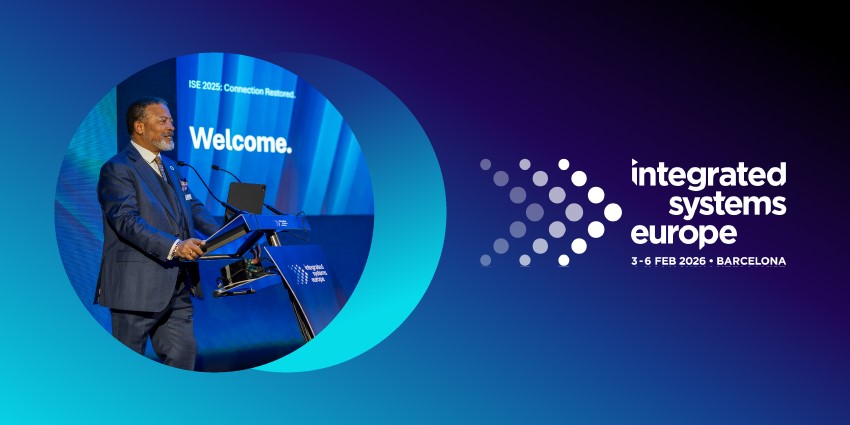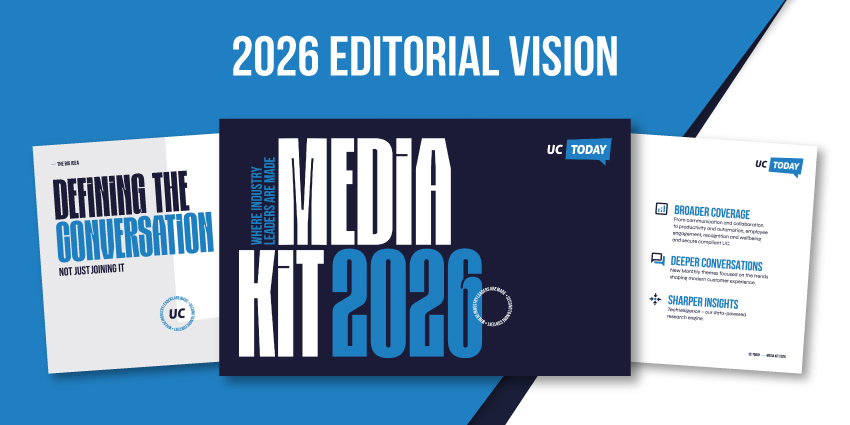Next-gen Automation = Proactive Intelligence
For UC leaders, 2026 will be the year collaboration grows up. The market is shifting from convenience to intelligence, from siloed tools to integrated ecosystems. Tim Banting, Head of Research at Techtelligence, says:
“It’s not smart to take a transcription and have it sat there doing nothing with it,” “There’s going to be a lot more organizations that will be demanding that next step.”
As budgets tighten, enterprises are investing in unified platforms that automate workflows, connect systems of record, and deliver measurable outcomes. UC trends point towards this proactive focus reshaping the workplace experience — one decision at a time.
Smart Collaboration Takes the Lead
The days of video calls as the center of UC strategy are over. The new frontier is collaboration intelligence. According to Techtelligence data, more than 700 enterprises, with buying intent, are currently exploring AI meeting tools that automatically summarize discussions and assign tasks.
Banting argues that the old model – where meeting transcriptions and notes are siloed – is no longer enough. “If I mention on a call that I need to provide you that report by end of play today, why can’t AI take that transcription and update my task management system?” he asks.
This expectation marks a turning point. UC buyers are no longer shopping for features; they’re shopping for outcomes. Smart UC platforms are expected to capture context, trigger actions, and support prioritization across the workday. “It seems strange that we still have all these independent tools,” Banting says. “AI could take that workload and effort away from us and make life a lot easier.”
Buyer considerations for 2026:
- Prioritize UC suites that integrate natively with productivity and workflow tools.
- Ask vendors how their AI converts meeting data into actionable next steps.
- Evaluate whether collaboration systems can predict, not just record, team priorities.
CX Budgets are Funding UC Innovation
One of the most surprising findings in Techtelligence’s 2026 research is that around 25% of UC projects are funded by CX budgets.
“It’s recognition that internal collaboration drives external experience,” says Banting. “The two are inseparable.” This shift reflects a growing understanding that faster internal communication means faster, more consistent customer service.
“The customer experience doesn’t start and stop at the contact center,” Banting explains. “If you answer 80% of your calls in 20 seconds, that’s just the beginning. Customers don’t care how quickly you picked up the call – they care when they get a solution.”
This funding crossover means UC leaders now share strategic ground with CX peers. Collaboration tools are no longer judged purely by uptime or video quality, but by how well they help organizations serve customers.
Experience Infrastructure: Where UC Meets CX
The convergence of UC and CX is accelerating. “By 2026, unified communications and customer experience won’t be treated as separate categories,” Banting predicts. Techtelligence calls this merger Experience Infrastructure — a unifying layer that connects employee collaboration with customer engagement.
For UC buyers, the implication is clear: the next competitive advantage lies in platform integration. Vendors that seamlessly link communication, workflow, and analytics will outpace those offering standalone features.
Questions UC buyers should ask vendors:
- Does your platform integrate directly with CX and CRM systems?
- How is data shared across collaboration and engagement layers?
- What level of explainability and governance does your AI provide?
The Move from Testing to Deploying AI
Across the enterprise, AI is moving from pilots to production. According to Techtelligence’s Buyer Intent Index, 62% of enterprises are now researching or deploying AI-driven UC and CX platforms.
“The year of experimentation is over,” Banting says. “We’re moving from testing to doing. AI isn’t a pilot anymore – it’s being scaled for measurable efficiency.”
Leading UC vendors are adapting quickly. Banting notes that “Zoom, RingCentral, and 8×8 are looking at how people work and making sure their stack meets those needs,” while “legacy vendors” risk falling behind.
He emphasizes that forward-thinking suppliers “look at the whole employee experience and how to make life easier and more productive.” UC buyers, he adds, should demand evidence: “This isn’t about adding features. It’s about delivering real integration and real outcomes.”
Understanding the UC Landscape Ahead
The UC landscape in 2026 is defined by intelligence, integration, and proof. Enterprises want tools that automate action, connect front and back offices, and demonstrate measurable impact.
Banting summarizes the shift: “People want the technology to suit the business process, not re-engineer the business process to suit the technology.”
For UC decision-makers, that means:
- Invest in AI that turns collaboration into action.
- Pursue integrations that bridge UC and CX systems.
- Collaborate with CX leaders on shared funding opportunities.
- Choose vendors who prove outcomes, not just features.
Smarter collaboration is no longer a goal – it’s the new baseline for unified communications.
Find more buyer insights
If you’re involved in procurement decisions for your business, follow Techtelligence on LinkedIn for weekly insights, analysis, and expert advice to help you make smarter technology choices.
You can also join its growing LinkedIn Community Group to discuss trends, share experiences, and connect with like-minded business professionals driving digital transformation in their industries.
Follow for More Buyer Trends & Insights
Find Tim’s full forecast for UC buyers in 2026 on Techtelligence.
If you’re an enterprise technology buyer or involved in procurement decisions for your business, follow Techtelligence on LinkedIn for weekly insights, analysis, and expert advice to help you make smarter technology choices.
You can also join its growing LinkedIn Community Group to discuss trends, share experiences, and connect with like-minded business professionals driving digital transformation in their industries.







